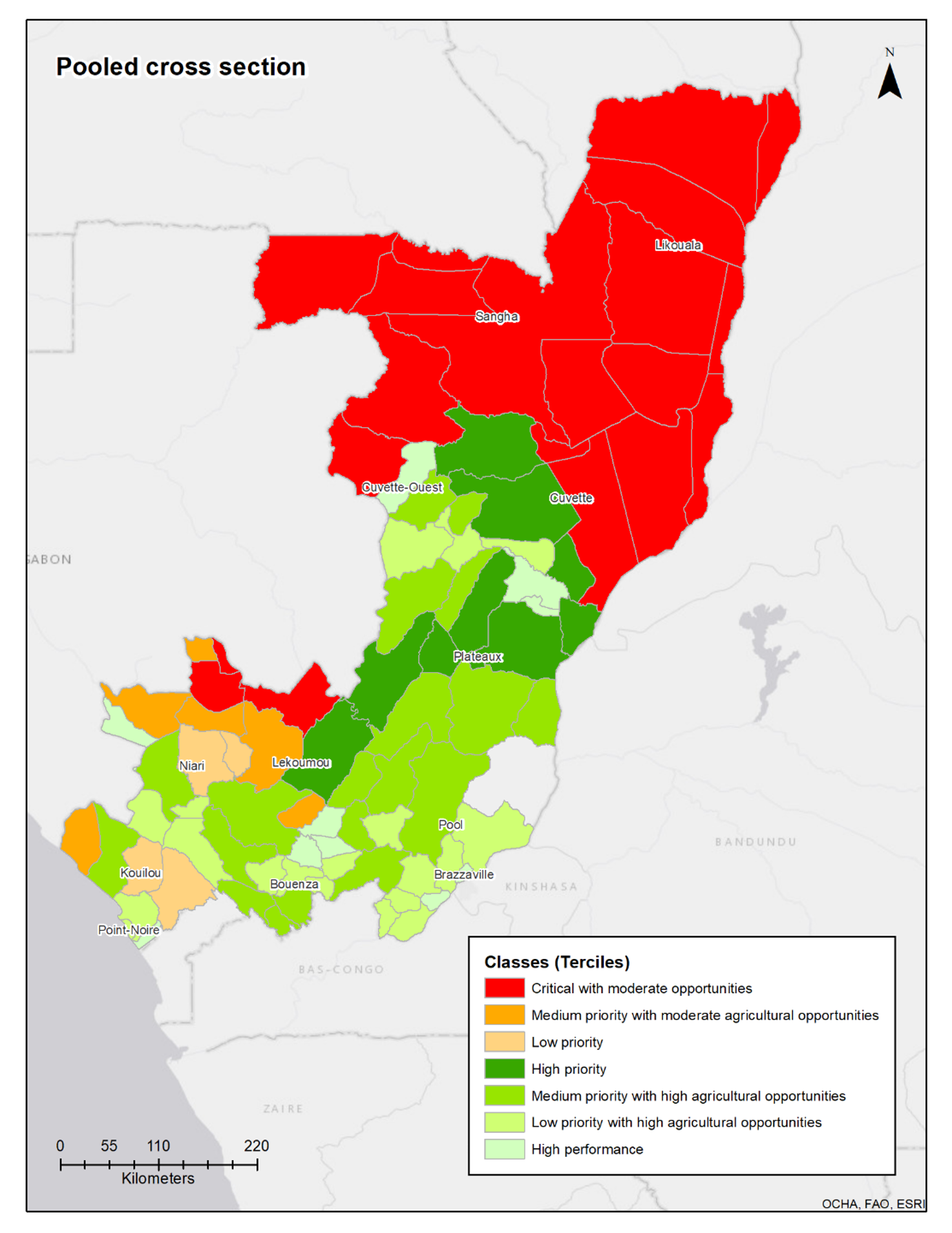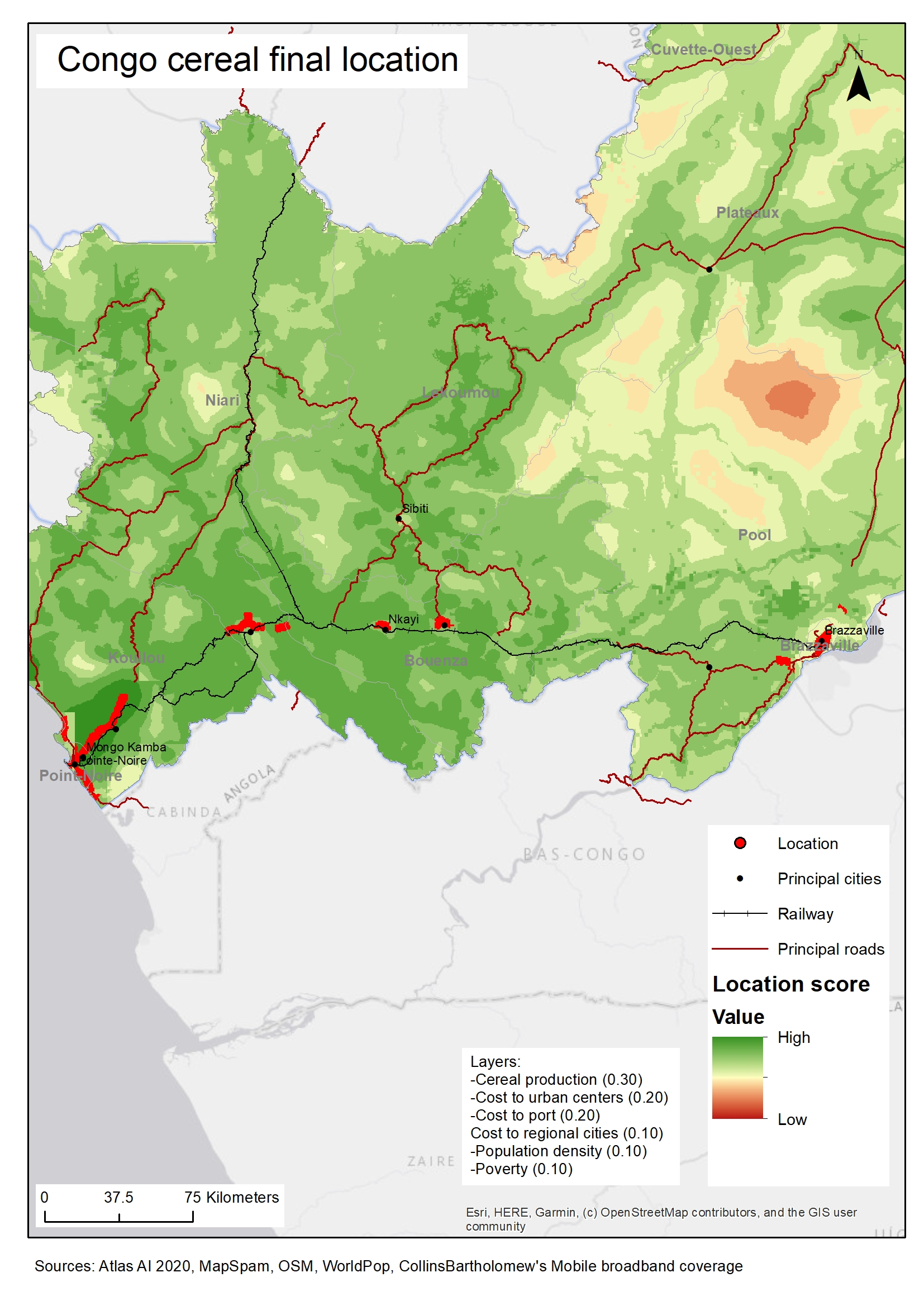Congo |
THE PROPOSAL
The Hand-in-Hand Initiative is part of the Government's efforts to build a strong, diversified, resilient economy through its National Development Plan 2022-2026.
One of the strategic pillars of the National Development Plan is the development of agriculture, with the following objectives:
- Meet the demand for poultry products, other animal and fishery products
- Increase the production of feed inputs
- Meeting the demand for staples, fruit crops and agro-forestry products
- Improve conditions for agriculture, livestock, fisheries and aquaculture
- Build national resources and capacity
To respond to global food crises and limited food imports, the Government has developed a food resilience plan, comprises the following strategies:
- Intensify national production to complement and substitute food imports
- Facilitate the transportation of agricultural products to consumers
- Stabilize the cost of essential food and agricultural products
- Support of local producers
- Protect the most vulnerable populations through rigorous financial and social programmes
Through the Protected Agricultural Areas (ZAP), the Government is working toward transforming the agriculture sector, specifically:
- Allocate at least 100 hectares of land to 10 or more cooperatives
- Aggregate value chains and encourage private sector investment
- Contractualize commercial relations by organizing producers around large industrial operators
- Intensify agricultural production by providing input access to producers, including water, quality seeds, fertilizers and mechanization
- Formalize production units as a means to boost economic development

COMMODITIES AND INTERVENTIONS
Cassava Flour Production (to make bread and pastry using cassava flour)
- Semi-finished (rusted pulp and cossettes) and finished products (chikwangue) covers only 4.74% of domestic demand (1.079 million tons)
- Cassava flour is strategic as it can help reduce malnutrition through vitamin enrichment
- The war in Ukraine has led the prices of wheat flour to rise by 90%. Bread-making cassava flour can help reduce the need for importing flour

COMMODITIES AND INTERVENTIONS
Soy and Maize Production
- Support the large-scale production of maize and soybeans -- raw material for the production of livestock feed -- in order to significantly reduce food imports of animal products.
- Since the establishment of protected agricultural zones (ZAP), there are on average 10 hectares of maize areas per group.

COMMODITIES AND INTERVENTIONS
Poultry Farming Development
- Meet the domestic need for poultry products through to the installation of modern production infrastructures, which will reduce the need for imports
- Build and equip with capacity for 11,000 breeding chickens, a hatchery with capacity of 70,000 eggs, and feed-manufacturing plant that could produce 1,000 tons of feed monthly
- Develop public-private partnerships for the supply of inputs and manufacturing of livestock feed and veterinary products
- Establish a lab for bromatology (study of food) to start a certification of quality assurance systems
Minster Paul Valentin discusses the HiH Initiative in the Republic of Congo

